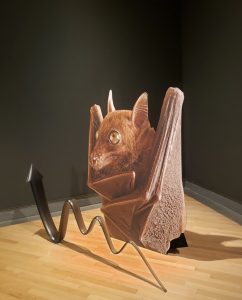GAME as CRITIC as ART. 2.0., part II (see Part I.)
Simulated violence to denounce real violence
You can shoot… or not.
– Mikel Reparaz‘s Buy Bush a PlayStation 2 Campaign. “As I sat pondering the president’s motives one day, it suddenly dawned on me that it is entirely likely our commander in chief has never played a single videogame in his life. Without the catharsis that videogames provide, Bush has had no way to live out his militaristic fantasies other than actually starting real wars,” said Reparaz. (via Pravda.)
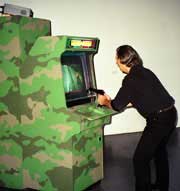
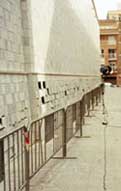
– In 2001, Joey Skaggs made an audacious proposal for the Espai D’Art Contemporani de Castellón. Art Attack. Visitors were invited to play to the arcade game inside the gallery. Once his/her name was entered, the screen switched to the surveillance camera and the shooter could see live video of the outside walkway where passersby can literally be shot at. Meanwhile the people in the street could hear the gun fire played through concealed speakers. Every 3 minutes a loud speaker announced in several languages: “Attention, attention. You are in an Art Attack Zone. Desecrators of this building and art will be shot. Survivors will be prosecuted to the full extent of the law.”
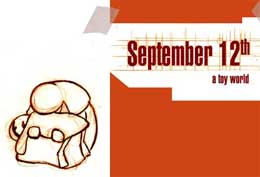
– NewsGaming.com‘s Play September 12 is “not a game,” but a “simulation” without possible winners or losers.” “It has no ending. It has already begun”. We are the hand that holds the retaliatory trigger. “You can shoot. Or not.”
In a Middle Eastern city, terrorists are easily pinpointed by their white head coverings. The player can send missiles, watch it land and the destruction it leaves in its wake. When a civilian is hit and another civilian walks by, the live civilian will stop and weep over the body of their fallen comrade. The mourners will then, stand and turn into terrorists. (via Miscellany)
– WarGame , by Joesér Alvarez, lets you tests an impressive arsenal of weapons to defend or attack the world, showing their power but also the consequence of using them. Before starting the game, the author asks the players if they really want to play that game. If they say yes, the only possibility of action they are offered is to send a message to politician or explore a new arsenal made of links to international peace organisations.
Shoot to win
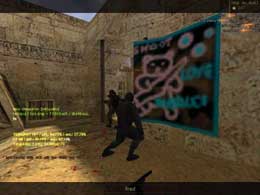
– Velvet-Strike was created by Anne-Marie Schleiner, Brody Condon and Joan Leandre as an answer to Bush war against terrorism. The game offers a collection of spray paints can be used for peaceful protests, anti-war messages and civil disobedience graffiti on the walls of the network shooter terrorism game Counter-Strike. (via wired )
– Blacklash, by Mongrel, is based on popular arcade “shoot-em-up” game, Backlash. Each player has to choose a deliberately stereotyped black character, and then proceed to battle the forces of evil that plot to convict or eliminate the player from the streets. The premise of Blacklash is that the authorities are in command of society and the streets. They have unleashed their law enforcers racist police officers, Nazis and the Ku Klux Klan – to crack down on the undesirables and maintain control of the streets. Players have to annihilate the powers-that-be to win back their freedom, and the game.
Blacklash is based on a combination of stereotypical half-truths and hardcore reality coming from the point of view of a young black male trying to survive inner city life in London the 1990s. Blacklash aims to encourage the black community through game culture. (via radioqualia)
Violence here is transmitted to players, they have to suffer, albeit virtually. To win, one has to shoot. Once again, it’s an emulation of real life and the frustrating message of a dystopian reality, but this time it’s more than a mere constatation.


